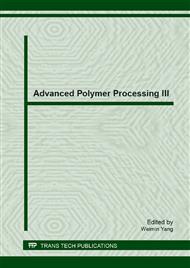p.581
p.585
p.591
p.597
p.604
p.609
p.614
p.620
p.626
An Anti-Occlusion Algorithm for Object Tracking
Abstract:
Object occlusion often happens in reality life, so it is easy to cause the loss of tracking object. In order to solve this issue, this paper proposes an anti-occlusion algorithm for object tracking. The algorithm bases on Camshift algorithm and uses the Bhattacharya coefficient to judge whether the target is occluded. When object occlusion happened, the object position of the next frame will be predicted by using Kalman filtering algorithm. The experimental results show that the new algorithm can achieve accurate tracking of sheltered object. The algorithm is less time-consuming and more robust.
Info:
Periodical:
Pages:
604-608
Citation:
Online since:
July 2013
Authors:
Keywords:
Price:
Сopyright:
© 2013 Trans Tech Publications Ltd. All Rights Reserved
Share:
Citation:


